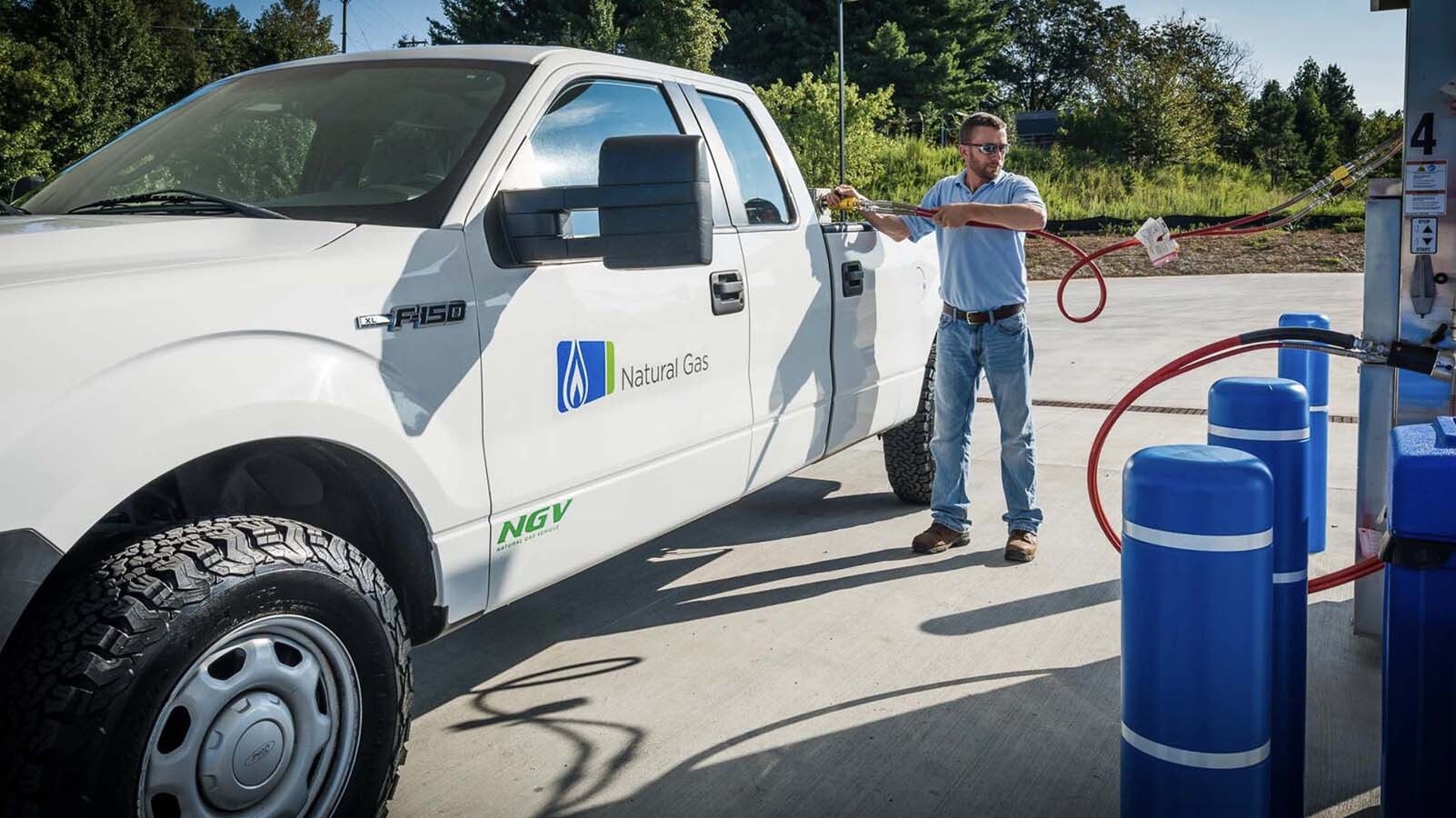Alternative fuel vehicle programs keep trying to get a foothold in Wyoming, but whether they’re electric or compressed natural gas vehicles, they keep running into the same challenge — insufficient infrastructure to support them.
Over the years, the state and some local governments have experimented with CNG vehicles with varying degrees of success.
In 2011, Rep. Jim Roscoe, I-Jackson, sponsored a bill that requested $1 million to fund a CNG filling station near Rawlins, buy new CNG vehicles or retrofit vehicles in the state and Wyoming Department of Transportation fleets to run on natural gas. The Wyoming Legislature ultimately agreed to $200,000, which went to retrofitting gas-powered vehicles in the state fleet.
Roscoe said that, at the time, he was trying to use the abundant natural gas resources in Sublette County. Natural gas then was much cheaper than gasoline and engines running on CNG lasted longer, he said.
“I thought it would be a good transition fuel,” Roscoe said.
Natural gas vehicles also produce 20% to 30% less greenhouse gas emissions than gasoline or diesel vehicles.
‘No Difference In Performance’
The departments retrofitted some of their vehicles, including then-Gov. Matt Mead’s vehicle.
“In terms of drivability, and in terms of just moving around, I noticed no difference in performance,” Gov. Mead told Cowboy State Daily.
These types of vehicles can run on natural gas and switch to gasoline when the CNG runs out.
Mead said the main problem was that most of the time, it had to run on gasoline because the CNG filling stations were few and far between.
“I think it still is a problem,” Mead said.
The Wyoming Department of Transportation still has some of the bi-fuel vehicles, but Jordan Achs, a spokesperson for the department, said that because of the long stretches between stations they most often run on gas.

CNG Hubs
The U.S. Alternatives Fuels Data Center reports there are nine CNG filling stations in Wyoming, two of which are government facilities that aren’t open to the public.
In 2016, the Laramie County Board of Commissioners paid more than $500,000 for a facility to be built near the Archer Complex in Cheyenne, which is still in operation. Another government facility is in Rock Springs, and Sublette County School District #1 operates one in Pinedale, which also is available to the public.
That leaves five other public facilities in Cheyenne, Rock Springs, Evanston, Afton and Jackson. Cheyenne is the only one in the eastern half of the state.
More Local Use
Local governments have some of the CNG vehicles in their fleet. If a vehicle needs only to drive around a town or county, the closest stations function as a hub.
This was the idea for the Sublette County School District station, which was built in 2012 as part of a pilot project for natural gas-powered school buses. The station was built for $200,000, and since it has a public refueling option, it generates revenues for the district. Tapping into the resources of the gas fields in the area was part of the interest in the facility.
Alicia Cox, executive director for the Yellowstone-Teton Clean Cities, was at the ribbon cutting when the station opened.
“We were standing there and you could just look over and see where the fuel was coming from,” Cox said.
A 2012 study by the state on the potential for CNG buses calculated that buses running in-town routes saved, based on natural gas and diesel prices at the time, $48 per week in fuel costs, and the buses on out-of-town routes saved $154 per week. The buses themselves cost about $32,000 more than diesel-powered buses.
The study concluded the buses would pay for themselves in five to eight years.
Running Out Of Gas?
Natural gas prices are particularly high right now, so it’s far less competitive with gasoline and diesel than it was a decade ago, something that can fluctuate over time as energy markets dictate.
Cox said that some utility companies around the Jackson area have natural gas vehicles, as well as a linen company.
YTCC is mainly focused on creating a CNG “ecosystem” for the gateway communities, Cox said. With stations in Jackson and Afton, CNG-powered traffic can head right into Yellowstone and then refuel on the way out.
“There’s this kind of niche group that has an interest in making it work,” Cox said.
In addition to producing less greenhouse gas emissions, Cox said that as a local fuel there’s a lot less energy and emissions produced in transport.
The organization still meets regularly, Cox said, but a lot of attention now is on hydrogen and EVs.
The federal government last month approved a plan by the Wyoming Department of Transportation that will provide $26 million for EV charging stations throughout the state.
Roscoe hasn’t done a lot for CNG support since the 2012 bill, but he said if there were interest, he might take up the cause of CNG again.
“Since we have an abundance of gas, it’s still not a bad idea. Though, I think electric vehicles are what’s coming. And so that’s what’s getting all the federal, even state support,” Roscoe said.





